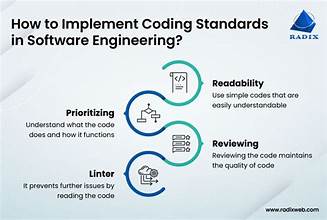The demand for multilingual information has never increased in today’s increasingly interconnected world. As organizations and individuals strive to reach global audiences, the value of translation in online material cannot be overemphasized. However, there is still a controversy about whether translation efforts should be prioritized by quantity or quality. While machine translation techniques are fast and convenient, the particular subtleties of language and culture frequently necessitate the experience of human translators to express messages clearly and effectively.
The Rise of Machine Translation
Advances in artificial intelligence have resulted in the creation of solid machine translation technologies. Platforms like Google Translate and Microsoft Translator have become famous for swiftly translating text across several languages. These programs use algorithms trained on large datasets to provide translations in seconds, making them extremely useful for essential communication.
Machine translation has unquestionable advantages, especially in cases where speed is critical or when working with enormous amounts of material. Businesses can instantly translate website content, product descriptions, and client requests without requiring human participation. Individuals can easily converse with people from various linguistic backgrounds, increasing global collaboration and understanding.
However, machine translation’s shortcomings become apparent when dealing with complicated or nuanced information. Literal translations frequently need to reflect the nuances of language, resulting in odd phrasing, errors, and misunderstandings. Cultural allusions, colloquial idioms, and context-specific terminology present substantial obstacles to automated systems, resulting in mistranslations with serious repercussions.
Human Touch: Why Quality Matters
Human translation, on the other hand, provides precision and nuance that machines fail to match. Professional online translation services have a thorough command of both the source and target languages, allowing them to express information while accurately maintaining the original work’s tone, style, and cultural context.
One of the primary benefits of human translation is the ability to customize content for the intended audience. Translators consider cultural sensitivities, regional dialects, and audience preferences to ensure the intended audience understands the message. Human translators add a level of creativity and understanding that automatic methods do not.
Furthermore, human translators have the critical thinking abilities to traverse ambiguity and resolve linguistic problems. They can detect the source text’s faults, inconsistencies, and ambiguities and request clarification to generate a more accurate translation. This attention to detail is significant in healthcare, legal, and technical translation, where correctness can have legal, financial, or even life-threatening consequences.
The Value Proposition: Striking A Balance
While the argument over quality and quantity in translation continues, finding a balance between the two is frequently the most effective strategy. Machine translation can effectively produce quick, imprecise translations or manage repetitive tasks with low linguistic complexity. However, human translation services are still essential when it comes to text that demands precision, originality, and cultural sensitivity.
Businesses and individuals looking to incorporate translation into their online content strategy must assess their objectives, target audience, and the nature of the content itself. Routine jobs and bulk translations may benefit from automated solutions, allowing human translators to concentrate on high-value assignments that require their skills. In contrast, crucial communications, marketing efforts, and legal papers require a human touch to ensure truth, clarity, and cultural relevance.
In conclusion, while machine translation has changed how we communicate across language barriers, it cannot replace human translators’ expertise and understanding. Quality should always come first When communicating complex ideas, emotions, and cultural nuances. Businesses and people may realize the full potential of translation by combining technology and human skills to reach global audiences and establish meaningful connections across borders.
The Importance of Human Translators in the Digital Age
Despite advances in machine translation technology, human translators remain critical to delivering accurate and nuanced translations. They contribute experience, inventiveness, and cultural sensitivity that robots cannot match, making them crucial for translating complex or culturally sensitive content.
One of the primary benefits of human translators is their ability to interpret context and adjust translation accordingly. Unlike algorithms, human translators may determine the intended meaning of a source text by considering the larger context, tone, and cultural references. This allows them to create translations that are correct, culturally appropriate, and engaging for the intended audience.
Human translators have the linguistic and cultural understanding required to handle the complexities of language. They can spot colloquial terms, wordplay, and cultural nuances that machine translations may miss, ensuring that the message has the intended impact and resonance. Furthermore, human translators can use judgment and discretion to select the most acceptable words and phrases to represent the author’s objective properly.
In addition, human translators play an essential role in quality assurance and editing, ensuring that translated information reaches the highest levels of accuracy and readability. They can spot faults, inconsistencies, and ambiguities in the original text and make the required adjustments and refinements to improve translation quality. This attention to detail is especially vital in domains like legal, medical, and technical translation, where precision and clarity are essential.
The Future of Translation: Integrating Technology and Expertise
As technology advances, the future of translation involves combining the strengths of human translators and computer translation systems. While robots are adept at processing enormous amounts of text rapidly and efficiently, they lack the human touch and creative vision required for accurate and culturally appropriate translations.
Human translators, on the other hand, bring a wealth of knowledge, experience, and intuition to the translation process, guaranteeing the highest quality and authenticity.
Machine translation technology will continue to progress in the next few years, owing to advances in artificial intelligence, natural language processing, and neural machine translation. These developments will surely increase the speed and accuracy of machine-generated translations, making them an even more critical resource for businesses, individuals, and organizations worldwide.
However, as the demand for high-quality translations rises, so will the demand for human translators who can offer experience, creativity, and cultural sensitivity that robots cannot match. Rather than perceiving robots as competition, human translators should embrace technology as a tool for improving their jobs and efficiency. By combining the strengths of human and machine translation, we can ensure that multilingual communication remains accurate, nuanced, and accessible in an increasingly interconnected world.
Final Word
To summarize, the dispute over quality versus quantity in translation is a multifaceted and continuous conversation that reflects the changing landscape of language and technology. While machine translation is fast and convenient, it cannot completely replace human translators’ knowledge, inventiveness, and cultural sensitivity. Quality should always take precedence over quantity when communicating complicated ideas, emotions, and cultural nuances through internet material. Businesses, people, and organizations can realize the full potential of translation by combining technology and human skills.
As technology advances, the future of professional translation online depends on balancing machine efficiency and human knowledge, ensuring that multilingual communication is accurate, engaging, and accessible to all.











